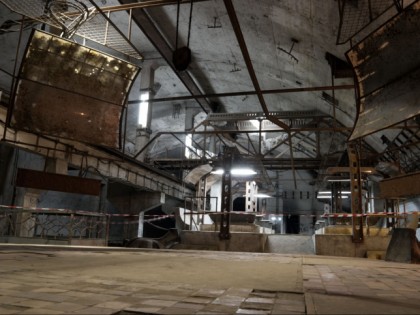Naval museum complex Balaklava - former secret submarine base
The Balaklava underground museum complex is the only museum in the world on the site of a top secret facility, which is cut down in the rocky terrain of Mount Tavros. It was here that in the period from 1954 to 1961 a plant was constructed to repair and service submarines of the Black Sea Fleet of the USSR. This place was chosen because the unique Balaklava bay, described in detail by the Russian writer A. Kuprin in the story "Listrigons", is surrounded by mountains and cannot be seen from the sea. Moreover, the entrance to the tunnel located in the bay cannot be seen from the sea either. In addition, it never has waves and its depth reaches 40 meters! All this made the bay an ideal base for submarines.
Today through the tunnels of the Balaklava underground museum complex one can go with an excursion or swim along the canal. Here they tell about the history of the facility, Soviet submarines and diver-heroes. In addition, the exhibition "Fossils of Crimea" works in the complex. The exposition includes the jaws of the mosasaur, ammonites, nautilus, corals, whose age is estimated at 200 million years. But the main thing is that one can imagine how the plant worked and how the boat repair system was arranged. A tunnel (canal) 600 meters long penetrates through the Mount Tavros. The work was arranged in such a way that the submarine entered the plant on one side of the mountain and left the other, following a direct course into the sea. Submarines in the tunnel were tested, repaired, refueled with all necessary and loaded with torpedoes. It is known that due to the exceptional location of the bay and the plant, in case of war, several thousand people could hide and live in its territory - the whole staff - continuing their work for several weeks. According to the project, the plant had to withstand a direct hit of a bomb, five times higher than the one dropped on Hiroshima. In 1957 Balaklava became a district of Sevastopol, it was closed for free entry and was not marked on maps. The plant lost its strategic significance when the bay became cramped for the newest submarines. In 2014 the underground complex became a branch of the Military History Museum of Russia's fortification structures.





































